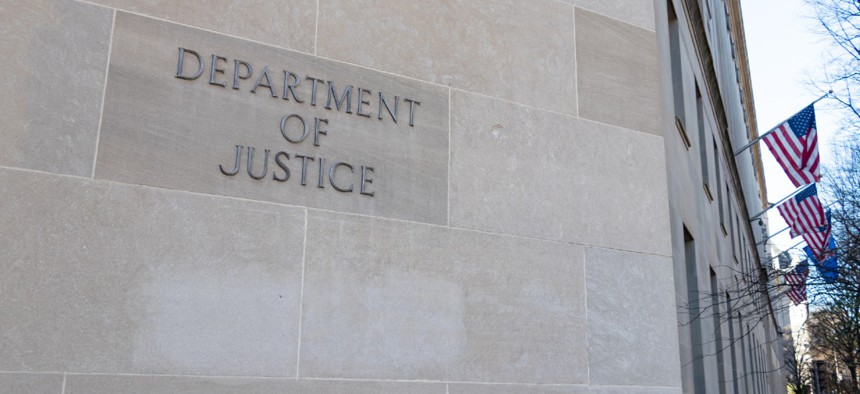
JL Images / iStock.com
Career Prosecutors Continue Push for Pay Equity
According to Justice Department statistics, only 65% of assistant U.S. attorneys are paid equivalent to a GS-15 or above, while the attorney corps at several other subcomponents are over 90% GS-15s.
A group representing career prosecutors at the Justice Department on Monday demanded that the department get rid of a pay scale that systematically underpays assistant U.S. attorneys compared to lawyers elsewhere in the department and grant the assistant attorneys access to the General Schedule.
Since 1964, the attorney general has had the authority to set up an alternate pay scale for assistant U.S. attorneys, called the Administratively Determined pay system, based on their level of experience. But the rest of the attorney corps at the Justice Department falls under the General Schedule pay system.
This dichotomy contributes to what the National Association of Assistant U.S. Attorneys has described as a gap upwards of $40,000 per year between prosecutors and trial attorneys with similar experience, and inhibits U.S. attorneys offices' ability to recruit a diverse workforce.
In a letter sent Monday to Deputy Attorney General Lisa Monaco, the association said that due to the separate pay systems, career prosecutors are “dramatically underrepresented” among GS-15-equivalent salaries compared to trial attorneys.
“Only 65% of AUSAs receive basic pay at or above the GS-15, Step 1 rate,” wrote association president Lawrence Leiser. “Trial attorneys in the litigating divisions are significantly more likely to be at or above the GS-15 level. In the antitrust division, 90% of attorneys are GS-15s or higher. Among civil division attorneys, 92% are at least GS-15s. In the environmental and natural resources division, 95% of attorneys are at or above the GS-15 level. The criminal division boasts the highest percentage of GS-15 attorneys: 97%.”
An adjustment to the Administratively Determined pay system in 2016 required the department to pay assistant U.S. attorneys with two years of experience or less at least equivalent to a GS-11. But the association noted that is still less than attorneys elsewhere in the department.
“The department still routinely advertises attorney vacancies in the litigating divisions and represents that attorneys with one year of professional experience are eligible to be hired at the GS-12 level, those with 1.5 years’ professional experience may be hired as GS-13s, those with 2.5 years’ experience may be hired as GS-14s, and four or more years of attorney experience makes the applicant eligible for the GS-15 level,” Leiser wrote.
Additionally, the pool of money devoted to annual raises for career prosecutors is also far below what is needed to provide the same performance-based raises that attorneys elsewhere in the department receive, the group argued.
“In recent years, the [annual pay review] pool has ranged from 1.25% to 2.5% of non-capped attorney salaries for each [U.S. Attorneys Office],” Leiser wrote. “From this amount, each office must first fund the non-discretionary raises that are mandated by an [assistant U.S. attorney's] progression in the [Administratively Determined] system, and only then may a U.S. attorney grant additional salary increases to top performers. In reality, there is never enough money available for a [U.S. Attorneys Office] to effectively use the higher ends of the broad bands on the [Administratively Determined] pay tables.”
The group called for the Justice Department to form a new task force to reexamine the pay disparity between prosecutors and trial attorneys.
“[We have] long advocated for the department to scrap the [Administratively Determined] tables and shift all [assistant U.S. attorneys] to the GS system,” Leiser wrote. “We believe this is the best way for the department to demonstrate its commitment to the principle of equal pay for work of equal value. The pay of all attorneys in the department could be easily compared, and attorneys could feel free to move between offices without facing the prospect of losing tens of thousands of dollars when moving between systems.”
NEXT STORY: Life Insurance Premiums Are Changing







